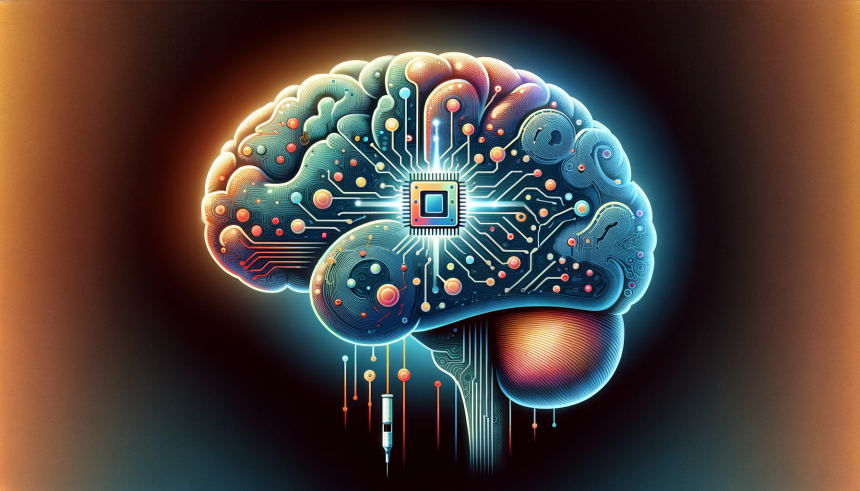Elon Musk, the maverick behind Tesla’s electric revolution and SpaceX’s cosmic endeavors, is now venturing into the intricate labyrinth of the human mind with Neuralink. This ambitious project aims to meld minds with machines through advanced brain-computer interfaces (BCIs), potentially altering the landscape of medicine, communication, and our grasp on consciousness itself.
Unveiling Neuralink
Launched by Musk in 2016, Neuralink’s mission is to forge a high-bandwidth, indistinguishable link between the cerebrum and digital realms. At its heart lies a diminutive, pliable chip designed to be ensconced within the brain, serving as a conduit for neural signals.
The Mechanics of Neuralink
This minuscule device, comparable in size to a coin, is delicately implanted within the brain’s motor cortex—a region pivotal to movement. Embedded within this chip are myriad microscopic electrodes that intimately interact with individual neurons, capturing their electrical whispers. These signals are then relayed to an external receiver, translating thought into action, and allowing for the manipulation of devices or digital environments.
The Horizon of Possibilities
Neuralink’s potential applications are as boundless as they are fascinating, encompassing:
- Restorative functions: For those ensnared by paralysis or neurological impediments, Neuralink promises a future where thought alone can govern prosthetics or other assistive technologies.
- Neurological treatment: This cutting-edge interface holds promise for mitigating afflictions such as epilepsy, Parkinson’s, and depression through precise cerebral modulation.
- Cognitive augmentation: Looking further afield, Neuralink harbors the potential to amplify human intellect, enhancing memory, expediting learning, and fostering creativity.
Navigating the Challenges
The odyssey to a functional and safe brain-computer interface is fraught with complexities, including:
- Safety: The brain’s fragility necessitates that the utmost care is taken to ensure the implant’s harmlessness and its symbiosis with neural tissue over time.
- Data sovereignty: The prospect of tapping directly into the mind’s sanctum brings forth daunting questions of privacy and the imperative for ironclad data protection measures.
- Ethical quandaries: The conceivable use of BCIs for purposes beyond therapeutic realms—be it cognitive amplification or more dystopian applications—demands a thorough ethical discourse.
The Journey Ahead
Despite the formidable challenges, Neuralink is charting a course towards groundbreaking trials, with aspirations to commence human testing in 2024. The implications of such technology are profound, potentially ushering in a new epoch for human capability.
Additional Considerations
As we stand on the cusp of this neural revolution, it’s pertinent to remember:
- Neuralink’s journey is in its nascent stages, with widespread application still on the distant horizon.
- The financial barrier to entry may initially be steep, though anticipated to decrease as the technology matures.
- Neuralink is amongst a cadre of pioneers in the BCI arena, with entities like Kernel and Paradromics also vying to unlock the mysteries of the mind.
The full impact of Neuralink remains to be seen, but its trajectory points towards a transformative fusion of technology and human cognition, promising to redefine our understanding of what it means to be connected.








